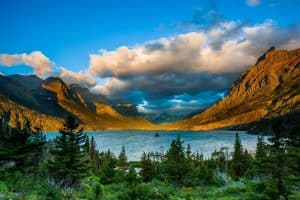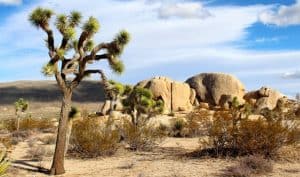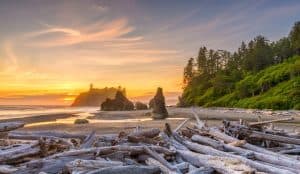Acadia National Park is known as one of the best places in the USA to see fall colors, but it’s so much more than that. As one of the most-visited natural areas in Maine, there’s a lot to love about Acadia National Park. In this article, we’ll tell you when to visit, what to do while there, and more.
More than just a park, Acadia National Park is an outdoor laboratory where people of all ages can discover more about the natural world. It’s also home to scientists at The Institute for Marine Research who conduct research in the marine environment. In addition to its scientific endeavors, Acadia is one of only four U.S. national parks that have wilderness areas. Its wilderness area protects approximately 700 square miles of forest and coastline as well as 3,000 acres of freshwater wetlands.
Best Time to Visit Acadia National Park
The best time to visit Acadia National Park is just the time that best matches your ideal vacation schedule. That being said, there’s a distinct tourist season that’s mostly influenced by the weather in this northeastern National Park.
Acadia National Park Tourist Season
Tourist season in Acadia National Park is during summer. The park’s location in the northeastern United States means that summertime is the only season when the park sees reliably hot temperatures.
As such, it’s when you can expect the busiest attractions, and most competitive rates for lodging (especially in Bar Harbor, the “gateway” town to Acadia). Even so, the crowds are never unbearable, and summer is a fantastic time to visit Acadia.
The best time to visit Acadia to avoid these crowds is during the shoulder seasons of spring and fall. In fall, you have the added bonus of viewing fantastic fall colors, but be aware that they disappear as soon as they come! Either way, spring and fall feature cooler temperatures and less crowds, and you’ll probably want to bring some layers.
Also notable is the surge of tourist traffic during the fall, due to Acadia’s spectacular fall colors. Acadia is heavily forested, which make it a popular destination for seeing the leaves change. This takes place each year from late-September to mid-October depending on the temperature and conditions, and is accompanied with a surge in lodging demand and hotel prices.
Winters in Acadia are much slower, as harsh winter temperatures hit the region. There’s also the possibility of significant snowfall as temperatures routinely dip below freezing. Not a great time to visit Acadia unless you’re particularly adventurous.
Acadia National Park Weather
Acadia National Park is characterized by its maritime climate. There are hot summers, mild shoulder seasons, and cold winters. Summers in Acadia sees highs of roughly 65-75F, and lows of roughly 40-55F. Shoulder seasons are milder, with highs of about 48-60F, and lows of roughly 33-40F. Winters are quite cold, with highs of 32-37F, and frigid lows of 14-20F.
Precipitation is pretty consistent year-round, with the Park seeing slightly more precipitation in November and December. Acadia sees roughly 4-5 inches of precipitation per month.
Acadia National Park Camping
Acadia National Park camping – The park is open year round and offers almost 1 million acres of camping sites available. With some of the best hiking trails you will ever experience, it’s easy to spend many days exploring the beauty of Acadia without leaving your car! Camping is available seasonally, mid-May–mid-October. Campers may use their own tents, RVs, trailers or motorized vehicles. No fires are permitted
Camping Acadia National Park
Camping Acadia National Park is the most economical way to stay in the parks is at one of the group campgrounds. The number of sites varies from as few as 10 and up to over 100 . Some are free, others cost a fee. Campers are responsible for their own personal equipment. Each site has a fire ring with grill and picnic table. Other facilities include drinking water, flush toilets, showers, laundry room and a dump station. Sites are generally spaced farther than they appear on maps but you can easily walk between them. Most reservations must be made by mail or fax.
Camping near Acadia National Park
Camping near Acadia National Park there are many options. Here are our favorites:
Blackwoods Campground
Named after an 18th Century resident of Bar Harbor; this rustic wooded setting. The Blackwoods Campground is located along the south side of Mt. Desert Island near Rte. 3A just east of Bar Harbor’s village center. The area was first settled in 1621 when John Smith discovered a small settlement on the shoreline surrounded by thick forest. After being burned to the ground during King Philip’s War , the area became known as “Bathsheba Settlement” after Bathsheba, wife of Solomon. Over time a handful of homes, mills, taverns, and general store were built among the trees. In 1836, the name changed again to Eastport, after the largest town on the island. It remained a popular summer destination until WWII when the U.S. government took over most of the land.
Cabins remain standing, serving as vacation rentals today. A few buildings still stand including the old post office which has been restored into a restaurant. The Blackwoods Campground has 752 spaces, including 34 group sites. Sites have full hookups and showers. The Blackwoods Campground has the largest variety of tent sites of any campground in Acadia National Park. These sites include gravel pads. Tent sites also include picnic tables, grills, a lantern area and potable water connections. Blackwoods RV Sites vary in length and width and are located throughout the campground. Some RVs may require additional hookups, electrical service, and sewer services.
Seawall Campground
The Seawall Campground is located next to Katahdin Woods and Waters Preserve on the shore of Frenchman Bay in the town of Bar Harbor. It is just off Route 102A about 1.5 miles north of downtown Bar Harbor. The North Beach of Mount Desert Island lies across the street.
Heron Pond Campground
Located near Bar Harbor’s Old Post Office area, Heron Pond has more than 100 campsites divided into loops of 10 campsites. Each site contains a hard surface pad, picnic table, fire ring, and water supply tap. A small bathhouse provides showers, laundry facilities, and restrooms. Some sites overlook Heron Lake. Other sites face south toward the Atlantic Ocean.
Picnic Area 3
These four campsites lie below the lower falls of the Bar Harbor River and are managed as part of the Picnic Area 3 network. They are open only during April, May, and September. Sites cannot be reserved this year.
Hull’s Cove Camping
Two of these sites are situated above located near the south end of Bar Harbor, by the entrance to Seal Cove State Park.
Bass Harbor Campground
The Bass Harbor Campground has 20 campsites nestled into the woods near the shoreline at Bass Harbor Head Lighthouse.
Baxter Woods
Camp is accessible off the Park Loop Road at the junction with Baxter Rd. Open year round; 4 lean-tos 1 bathroom and 1 shower.
Camel’s Hump Campground
This camp sits beside a stream along the Park Loop Road about 3 miles north of Eastport Village. It offers 23 campsites, 2 restrooms, picnic tables, grills, a playground area and drinking water.
Chimney Pond Campground
It is adjacent to Chimney Pond. The campground is just a few minutes’ drive from Route 102, which brings access to Chilmark, Southwest Harbor and beyond. Sixteen campsites with 8 pull-through spots. A half bathhouse.
Craggy Mountain/Easton Ridge Campground
Directly across the road from the Seabreeze Motel and Restaurant on the Schoodic Peninsula near Northeast Harbor.
Ocean Point Campground
Offers ocean views. Located in Seal Harbor off Route 3.
Wendell M. Holmes Campground
Located in Southwest Harbor near Bar Harbor.
Windfall Campground
Near Eastport on the Penobscot River.
Beachside Campground
Just north of Otter Cove at the tip of South Bubble Beach.
Weston Hills Campground
A few miles west of Katahdin Woods & Waters.
Pine Hill Campground
At the end of West Creek Road just south of Bar Harbor.
Baxter State Park Camping
The closest camping option in Baxter State Park.
Cape Elizabeth Campground
In Cape Elizabeth at the junction of US 1/Route 4 and Route 44.
Green Space Campground
Camping is allowed in this shelter, located at the southern entrance to Bar Harbor.
Schooner Head Shelter
Open year round, this shelter is close to the trailhead for Lazy Moose Trail.
Tremont Camping
Camping is permitted in this shelter just outside North Haven.
Horseshoe Pond Lean-To
Camping is permitted here during the summer. Located on the south shore of Upper Basin, Seawall has sites close to Bar Harbor and beautiful views across Frenchman Bay.
Cranberry Lake Campground
This camp ground is located near the Cranberry Lake area of the Park Loop Road. The lake is known as a good spot for bird watching and photography. It also often offers opportunities for fishing.
Lakeview Campground
The new Lakeview Campground is situated on the western edge of the Park Loop Road, offering panoramic vistas of the surrounding mountains.
Middle Somes Sound Campground
Just north of Katadnook Point, this campground is only accessible by boat. Its location provides great hiking trails and scenic views of Middle and Lower Somes Sound.
Morrill Cove Campground
Situated between Bar Harbor and Seal Harbor, Morrill Cove has open fields for tents and RVs, and several miles of excellent beaches and walking paths.
Pine Point Campground
Also just north of Katadnock Point, Pine Point features open spaces and quiet trails. Site amenities include showers and flush toilets.
Sand Beach Campground
Located next to Katadnak Point, Sand Beach offers easy access to sand dunes and dramatic coastline.
The Seawall Campground
Located near Seal Harbor on the north end of the island, adjacent to the Beech Woods Visitor Center, which also includes restrooms, a gift shop, information desk, and snack bar.
Beachside Campground
Located along the east shore of Bar Island, this campground has access to several beautiful beaches and offers unparalleled views of Bar Island.
Horn Pond Campground
A quiet campsite offering panoramic overlooks of Horn Pond and a short stroll across the causeway to Somesville Beach on Great Point. A few trailheads lead into the woods to connect with hiking trails in the area. The campground also provides easy access to Bar Island.
Bar Island Campground
Situated on Bar Island between the Bar Island Causeway and Otter Cove , this campsite has stunning views of Otter Cove and Bass Harbor Head Lighthouse. It’s close to several hiking trails, including the Tuckernuck Trail, and accessible via foot ferry from Otter Cove.
Ocean View Camping – North End of the Island
Campers have ocean and lighthouse views from this secluded site tucked away on the western side of Mount Desert Island. Accessible only by boat.
Duck Harbor Campground
The Duck Harbor campground is located next to the entrance of Bar Harbor on the south shore of Mount Desert Island. It has 90 sites and 1 bathhouse.
Ocean View Camping
The Ocean view campground is located off Route 3A near North Haven. It has 50 sites and 5 half-bathhouses. The Ocean View campground consists of 2 loops. Sites in this loop are dispersed throughout the area and have private electric hookups and potable water.
Bass Harbor Outpost Camping
The Bass Harbor outpost campground is located between Bar Harbor and Mount Desert Head. It is accessible via West Street , Rt. 30, or Old Farm Road. This is a small dispersed site, and there is little parking space.
Backpacker’s Shelter 2
Located near the head of the Somes Sound system, adjacent to the Visitor Information Center, Backpackers’ Shelter 2 is open seasonally, weather permitting. It has 20 pitches, electricity, running water, flush toilets, and shower facilities.
Carson’s Landing
Situated at the mouth of Jordan Pond, Carson’s Landing offers 12 tent sites nestled by a pond.
Getting To and Around Acadia National Park
Acadia National Park is best accessed by either Bangor International Airport (BGR) or Hancock County-Bar Harbor Airport (BHB). The latter is closer to the park but also a much smaller airport with more local flights.
There are car rentals at either airport, and this is probably the easiest way to see the Park. Park Loop Road cuts through Acadia, and is a short 30-mile drive to see the Park’s major attractions. Do note that Acadia National Park is on Mount Desert Island, so you’ll have to take your car to Trenton Bridge at the northern edge of the island.
There is also a bus running out of Bar Harbor that takes tourists around Mount Desert Island to major stops and amenities through the park.
But Acadia is really best seen on foot, and the Park has been designed to showcase the natural beauty of the area above all. With many trails all through and around the park, you’ll never run out of hikes, treks, and new things to see. We’ll cover more popular trails below.
What to Do in Acadia National Park
Even though Acadia National is on the smaller side as far as US National Parks (just 77 sq. mi.), it’s still packed with plenty of things to see and do.
Arcadia National Park Hiking Trails
Trails vary in length from short loops through woods to multi-day hikes. Hikes take visitors up mountains, along rivers, into deep canyons and across rugged uplands. Many are relatively easy while others require good physical conditioning and stamina. Be sure to carry adequate supplies, including food, drink, extra clothing layers, insect repellent and sunscreen. A map, compass, first aid kit and flashlight are also advised. Trailheads range in location from parking lots to remote trailheads several miles away. They differ only in what kind of terrain they lead through. They may be paved or dirt paths, stone walls or wooden bridges. If there are no signs identifying a particular path, it probably means this is not your trail. Look for the yellow blazes which indicate official trails or for “blazed” trails where hikers have marked an area off-limits to vehicles. You can even Hike sections of the Appalachian Trail.
There are 19 accessible day use areas within the park that provide visitor access to the backcountry. These include 14 car-accessible, four trailhead and two boat launch ramps. Car-accessible areas do not contain toilet facilities; however, some provide potable water. Water sources are located at the following locations: Wolf Pond, Indian Beach, Jordan Pond House, Upper Falls, Otter Cove, Lake Glen Bay, St. Agnes Island, Echo Lake, Long Pond, and Blue Hill. All sites except those at Indian Beach and Echo Lake can accommodate overnight stays. Campfires are allowed only in designated fire rings unless otherwise noted. Fires are prohibited during rain. See below for more details.
A few trails inside the park border state lands or private land owned by the state of Maine. Contact the Bureau of Parks & Lands for more information.
HIKING TIPS
To avoid being lost, pay attention to your surroundings and choose carefully. When you’re out hiking, remember the cardinal rules of safety: Stay on the trail; don’t hike alone; keep an eye on small children; check weather forecasts before setting out; know how to respond if attacked; practice safe bear behavior; and leave no trace when you’re finished. Bears are very common in the park.
Activities for Kids
There are numerous ways to interact with nature in Acadia. Many activities take place outside, such as rock climbing, hiking and biking trails, fishing, kayaking, swimming, boating, horseback riding, beachcombing, birdwatching, wildlife viewing, golfing and tennis. Inland you’ll find over 100 miles of multi-use trail networks connecting hundreds of parks, beaches, lakes and rivers throughout the region!
Ranger-led programs
If you want to go hiking, canoeing or simply learn more about our natural environment, ranger-led nature walks offer a great introduction. Most are scheduled daily in summer.
Campfires and Picnics
A limited number of fires remain open year round. Fires are permitted only where designated areas exist. A fire permit must be acquired prior to use and is required during summer months. Permits are free and may be obtained online, by mail, or in person at any staffed ranger station in Acadia National Park.
Cadillac Mountain

The most famous peak in Acadia is Cadillac Mountain. It’s actually the highest peak on the USA’s east coast, standing at 1,530 feet. Needless to say, it’s a rewarding trek with fantastic views. Despite its impressive stature, the peak is much more accessible than you might think. The popular Cadillac Summit Loop Trail is only 0.5 miles long, although there are longer and more arduous hikes available. You can also drive to the summit up a roughly 4-mile winding road. The peak is also known for its sunsets. Due to its elevation and situation right on the Atlantic Ocean, it’s actually the first place in the United States to see a sunset each day. Fun fact.
Park Loop Road
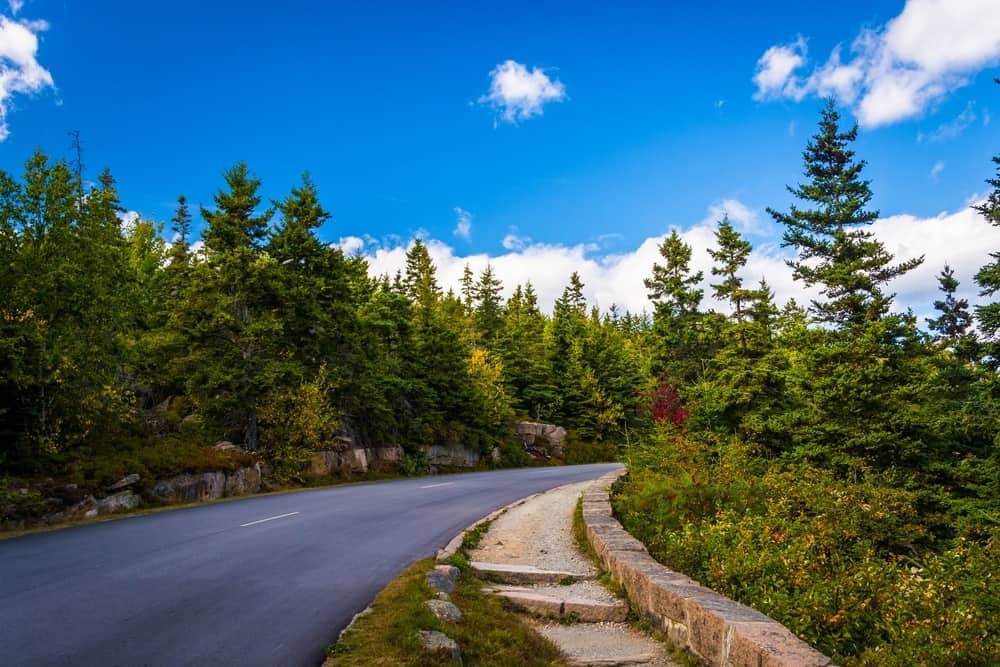
For a quick overview of Acadia, a drive on Park Loop Road is a great way to start. Acadia isn’t an especially big National Park, so a drive along this 27-mile loop won’t take you long, and it gives you a great sense of the entire park. It’s a great way to get your bearings, or even to see the park if you don’t have much time. There are stop-offs, viewpoints, and trails along the road if you want to take your time.
Thunder Hole
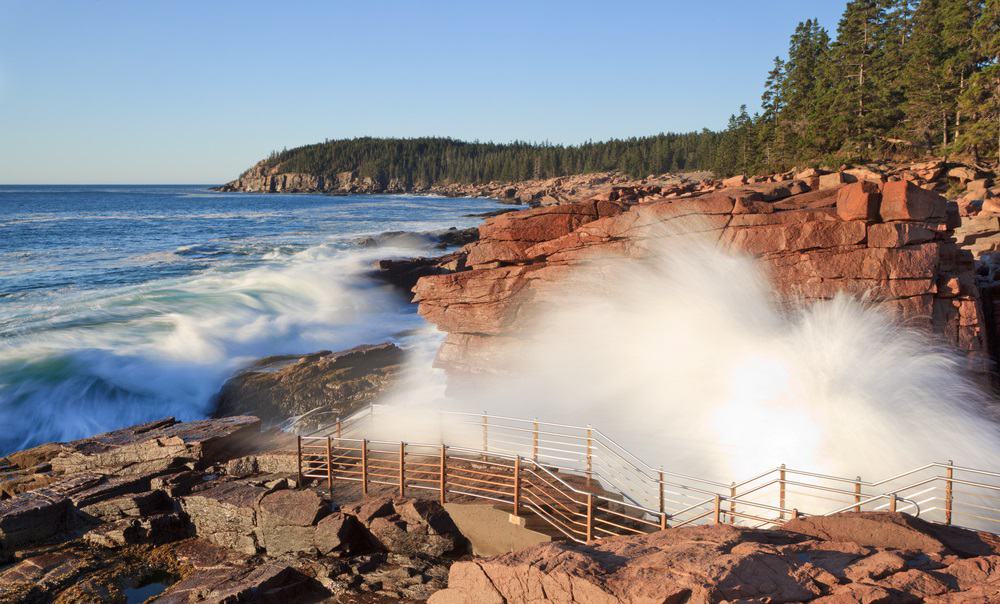
Thunder Hole is a name given to a small crevice of rocks off Acadia’s southwest coastline. The waves crash off the rocks to create thunderous sounds and effects. It’s an exciting spot to check out, but you should be prepared for the crowds that frequent the area. The best time to visit Thunder Hole to see the waves crash is just before high tide. There is parking at Thunder Hole, but it might fill up during peak tourist season. There’s also a hiking trail from Sand Beach, as Thunder Hole is located roughly 2 miles west of the beach.
Jordan Pond

Located toward the center of Acadia is Jordan Pond, a large pond backed onto picturesque forests. There’s an easy trail leading around Jordan Pond, and you can also access more difficult trails within the region. Stop off at Jordan Pond House for snacks or coffee before you get started.
Bass Harbor Head Lighthouse

Bass Harbor Head Lighthouse is located on the southern tip of Acadia, and is a historic lighthouse built in the 1800s. The way this old lighthouse sits against the ocean on rocky cliffside represents iconic maritime USA, which is why it’s such a heavily photographed site. Stop here to soak up some history, or soak up some views off the east coast. It’s also a great spot to catch a sunset or sunrise.
Sand Beach
Sand Beach is a large beach located on the southeastern tip of Acadia National Park. It’s situated in a cove, and is surrounded by picturesque forests. It’s a great summer destination to spend some time in the sun, but you should be aware that it’s not a traditional sandy beach. The northeastern Ocean waters are rarely warm enough to swim, and the beach doesn’t have the soft, white sand that many might expect. Either way, the beach is connected to many nature hikes and scenic excursions, and it’s a great way to cap off your explorations of the surrounding areas. It’s worth seeing for the views alone.
Acadia National Park Festivals & Events
If you’re lucky enough to be in Acadia during certain times of year, be sure to check out some of our favorite festivals & events, including the following:
Acadia Birding Festival – Each summer in Acadia there is the Acadia Birding Festival, a festival organized by the local birding community on Mount Desert. Acadia is home to many species of bird, both aquatic and on land, making their birding community very active. Some birders have called Mount Desert the “warbler capital of the world”. The Birding Festival has many organized events, including nature walks, opportunities to meet other hobbyists, and more.
Acadia Night Sky Festival – Each year at the end of September is the Acadia Night Sky Festival. This astronomy festival is packed with events that celebrate the beautiful night-sky over Acadia. Areas of Acadia’s coastline are completely untouched by light pollution, and are some of the best spots to see the night-sky in the Eastern United States. Events include workshops, speakers, hands-on demonstrations, and other ways to learn more about astronomy.
Bar Harbor Music Festival – Each summer in Bar Harbor is the Bar Harbor Music Festival, a music festival which celebrates talent in classical music across the region. The event has been running for over 50 years, and has a rich history of instrumentalists, singers, and composers. If you’re a classical music fan, this event is not to be missed.
Acadia National Park
Thanks for reading our guide to Acadia National Park. There’s a reason this is one of the most renowned parks on the USA’s East Coast. Use our guide to plan your ultimate Acadia vacation.
FAQs
Does it Snow in Acadia National Park?
Yes. Temperatures in Acadia are quite frigid during the winter months, making snow quite frequent in Acadia. In fact, the park averages roughly 61 inches of snow throughout the season. This is another reason that the park sees significantly less tourist traffic during the winter.
When to Visit Acadia for Fall Colors?
Acadia is renowned for its fall colors, with miles of forest that change colors with the seasons. The best time to see fall colors actually depends on the temperatures and conditions year-to-year, but peak fall colors will generally appear from late-September to mid-October. Do note that this is a popular time to visit the park, and lodging may be particularly expensive. Also note that the season begins and ends quickly, making it a difficult destination to plan in advance.
Zion National Park Camping | Camping in Zion
Glacier National Park Camping
Best Time to Visit the Grand Canyon National Park
Best Time to Visit Olympic National Park
Best Time to Visit Joshua Tree National Park
Best Time to Visit Death Valley
Best Time to Visit Acadia National Park
Yosemite Hiking Trails
Yellowstone Hiking Trails
Things to Do in Rocky Mountain National Park
Best Time to Visit Zion National Park
Best Time to Visit Glacier National Park
Best Time to Visit Yellowstone
Best Time to Visit Yosemite



